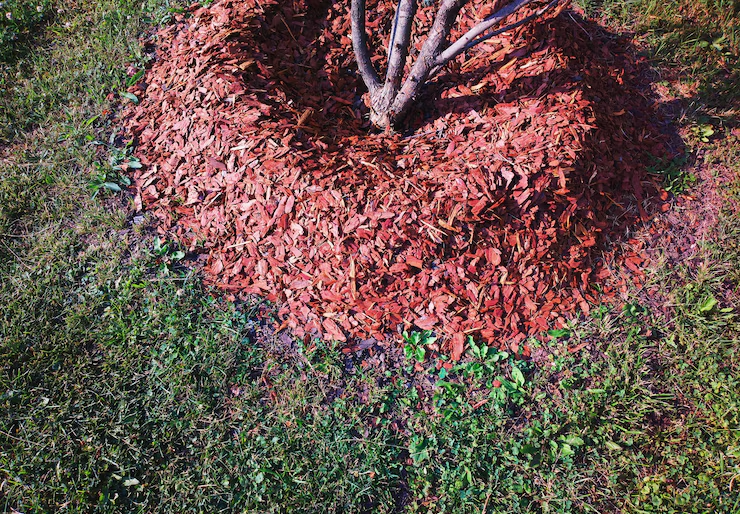Lolita fashion is a distinctive subculture that began in Japan during the 1980s and has since become a global phenomenon. With roots in historical Western fashion, particularly the Rococo and Victorian periods, Lolita has evolved into a multifaceted style with various subgenres and a strong cultural identity. This article explores the origins, key elements, subtitles, and cultural significance of Lolita fashion, giving readers a comprehensive understanding of this fascinating style.
Origins and Evolution of Lolita Fashion
Lolita fashion emerged as a response to the fast-paced and often revealing trends of mainstream fashion, offering instead a celebration of modesty, elegance, and historical aesthetics.
Roots in Rococo and Victorian Eras
Lolita fashion draws heavy inspiration from the Rococo period (18th-century France) and the Victorian era (19th-century Britain). These eras emphasized ornate clothing, with rich fabrics, lace, bows, corsets, and ruffles. The detailed and feminine designs from these periods influenced the core elements of the Lolita style, which emphasizes the same grace and structure found in historical dress.
The Birth of Lolita in Japan
In the 1980s and 1990s, the Lolita fashion movement began in Japan as a subculture associated with rebellion against societal expectations of women’s fashion. Originating in the vibrant street fashion scene of Harajuku, Tokyo, the Lolita style developed through young people’s desire to express their individuality while rejecting sexualized fashion trends. Lolita fashion allowed them to embrace a more whimsical, innocent, and modest look.
Japanese designers such as Baby, The Stars Shine Bright, and Angelic Pretty played a pivotal role in popularizing the style, and magazines like Gothic & Lolita Bible helped spread the culture beyond Japan’s borders. By the early 2000s, Lolita fashion had gained international recognition, with enthusiasts from Europe, North America, and beyond embracing the style.
Key Elements of Lolita Fashion
Lolita fashion is characterized by several core elements, creating a distinct look that is instantly recognizable. Each piece contributes to the elegance, modesty, and overall childlike or doll-like appearance of the wearer.
1. Dresses and Skirts
At the heart of Lolita fashion is the dress or skirt, which typically features a bell-shaped or A-line silhouette. This look is achieved with the help of a petticoat underneath the skirt to create volume. The length is generally knee-length, emphasizing modesty while still maintaining a playful and youthful look. Lolita dresses often come with intricate details like lace, bows, ribbons, and embroidery.
2. Blouses
Blouses are essential to Lolita fashion, and they are usually worn under jumper skirts (JSKs) or paired with skirts. Lolita blouses are typically high-necked with long, puffed sleeves or short ruffled sleeves, and they often feature delicate lace, frills, and bows to complement the ornate design of the skirts or dresses.
3. Petticoats and Bloomers
A petticoat is a must in Lolita fashion, as it provides the volume needed to give the skirts their signature bell or A-line shape. Petticoats are often made of layers of tulle or chiffon. Bloomers are worn underneath the petticoat for added modesty and comfort.
4. Shoes and Socks
Footwear in Lolita fashion ranges from Mary Jane shoes to platform heels and boots, often in pastel colors or decorated with bows or lace. Knee-high socks or thigh-high stockings are also common, typically in colors that match or complement the overall outfit. Lace-trimmed socks and patterned tights are popular choices for adding extra detail.
5. Accessories and Headwear
Accessories are key to completing the Lolita look. Headwear includes elaborate bonnets, headbands, bows, and flower crowns. Jewelry often features motifs like keys, hearts, or cameos, while parasols, lace gloves, and handbags shaped like animals or teapots are popular accessories that add to the overall elegance and whimsy of the style.
6. Hair and Makeup
Lolita hairstyles often involve soft, curled hair or styled wigs in natural or pastel colors. Bangs (fringe) are popular, as they frame the face and contribute to a youthful, doll-like look. Makeup is typically light and natural, with an emphasis on soft pink cheeks and lips, and sometimes subtle eyeliner and false lashes to enhance the eyes.
Substyles of Lolita Fashion
Over time, Lolita fashion has developed into various substyles, each with its unique aesthetic. Some are more whimsical, while others focus on darker or more mature themes. Here are the most popular substyles:
1. Sweet Lolita
Sweet Lolita is one of the most recognizable and popular substyles, characterized by pastel colors, sugary motifs (like candy, toys, and animals), and an overall cute and innocent appearance. Dresses often feature prints with themes like fairytales, cakes, or bows, and the accessories are usually playful and brightly colored.
2. Gothic Lolita
Gothic Lolita, inspired by the gothic subculture, incorporates darker colors like black, deep purples, and reds. The look is more mature and dramatic, with motifs such as crosses, bats, and roses. Makeup in Gothic Lolita fashion often includes darker eyeshadow and lipstick, with an overall emphasis on a sophisticated, moody appearance.
3. Classic Lolita
Classic Lolita focuses on elegance and maturity, often using muted colors like beige, brown, navy, and wine. The prints and designs are more historically influenced, featuring floral patterns, antique clocks, or classic literature references. This style is less “cute” and more refined compared to Sweet or Gothic Lolita.
4. Punk Lolita
Punk Lolita combines traditional Lolita elements with the edgy aesthetics of punk fashion. It often features tartan patterns, safety pins, chains, and platform boots. While it maintains the Lolita silhouette, Punk Lolita allows for a more rebellious and DIY approach to the style.
5. Sailor Lolita
Inspired by nautical themes, Sailor Lolita incorporates sailor collars, stripes, and oceanic colors like navy, white, and red. This style is playful and chic, often featuring sailor hats or anchor motifs.
Cultural Impact and Global Influence
Lolita fashion began as a niche subculture in Japan but has since evolved into a global fashion movement with communities worldwide. It is not just about clothing but also represents a way of life and identity for many enthusiasts. Lolita meetups, events, and fashion shows take place in countries all over the world, creating a tight-knit, inclusive community of like-minded individuals who share a love for fashion and its values of elegance, modesty, and self-expression.
In Japan, Lolita fashion remains a part of the larger Harajuku fashion scene, where young people express their creativity and individuality through various styles. Lolita has also made its mark in pop culture, influencing Japanese music, anime, and manga, as well as gaining recognition in the Western world through movies, magazines, and social media platforms like Instagram and TikTok.
Conclusion
Lolitafashion is a unique and influential subculture that has transcended borders to become a global phenomenon. With its roots in historical Western fashion, its various substyles, and its emphasis on modesty and elegance, Lolita is more than just a fashion trend—it’s a way of life. Whether you are drawn to the sweetness of pastels, the darkness of Gothic elements, or the classic elegance of mature designs, Lolita fashion offers something for everyone who values creativity, individuality, and beauty.
Frequently Asked Questions (FAQs)
1. Is Lolita fashion only for women?
No, while fashion is often associated with femininity, men can also participate in Lolita fashion. Male Lolitas are known as “brolitas,” and some wear the same clothing as women, while others adopt the related “Ouji” (prince) style, which is a more masculine interpretation.
2. Can I wear Lolita fashion every day?
Yes, many Lolita enthusiasts choose to incorporate the fashion into their daily lives. However, some prefer to wear it on special occasions or at meetups and events. Daily Lolita coordinates (known as “casual Lolita”) are often more toned-down versions of the style.
3. Is Lolitafashion expensive?
Lolita clothing can be expensive, especially if you purchase brand pieces from well-known Japanese designers. However, there are more affordable options through second-hand markets or indie brands. Some people also make their own Lolita outfits to reduce costs.
4. Is Lolita fashion a form of cosplay?
No, Lolitafashion is not cosplay. Cosplay involves dressing up as a specific character, while Lolitafashion is a lifestyle and fashion choice. Though the look can be whimsical, Lolita enthusiasts see it as everyday wear or a form of personal expression, not a costume.










